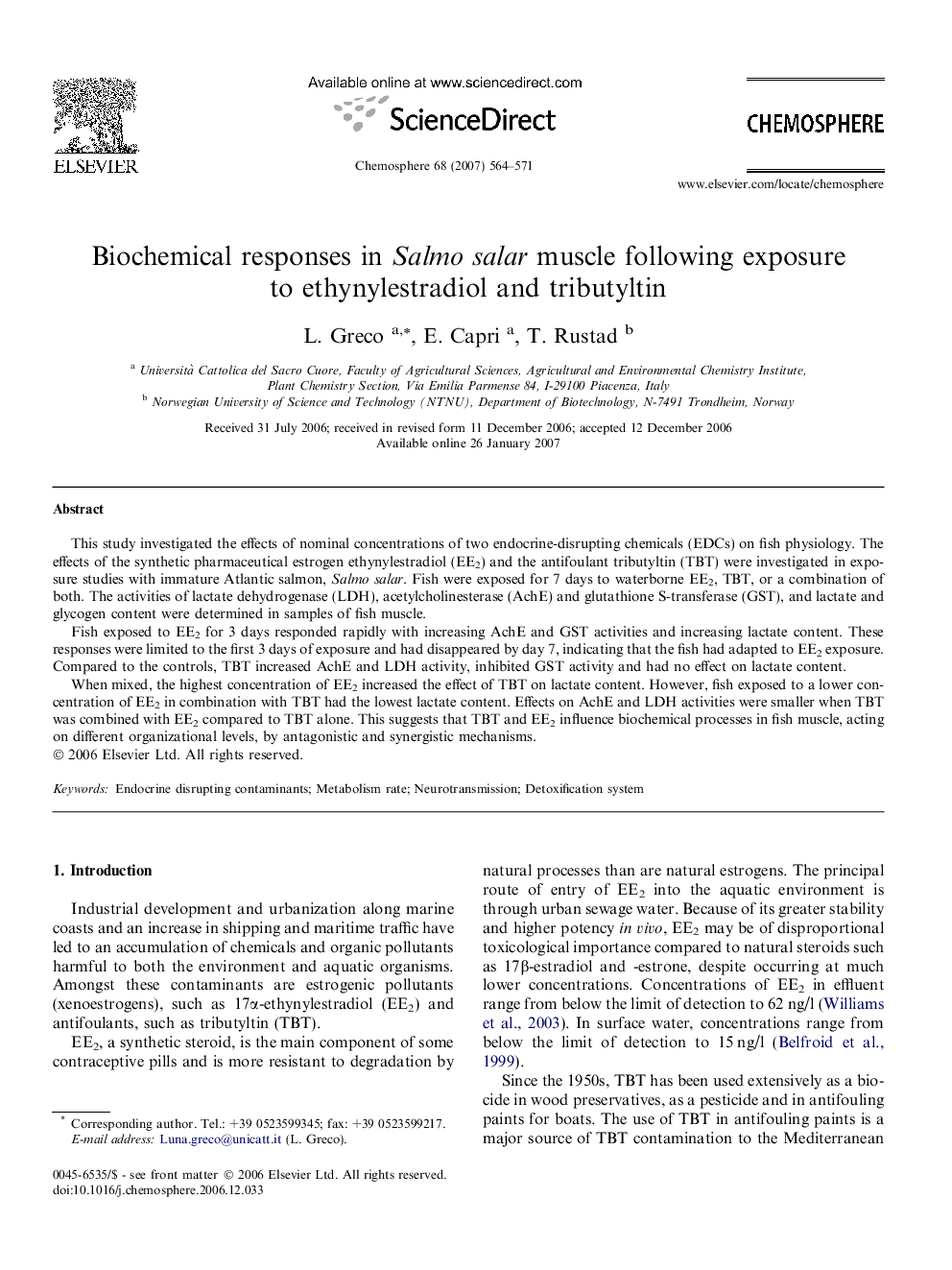| Article ID | Journal | Published Year | Pages | File Type |
|---|---|---|---|---|
| 4415603 | Chemosphere | 2007 | 8 Pages |
This study investigated the effects of nominal concentrations of two endocrine-disrupting chemicals (EDCs) on fish physiology. The effects of the synthetic pharmaceutical estrogen ethynylestradiol (EE2) and the antifoulant tributyltin (TBT) were investigated in exposure studies with immature Atlantic salmon, Salmo salar. Fish were exposed for 7 days to waterborne EE2, TBT, or a combination of both. The activities of lactate dehydrogenase (LDH), acetylcholinesterase (AchE) and glutathione S-transferase (GST), and lactate and glycogen content were determined in samples of fish muscle.Fish exposed to EE2 for 3 days responded rapidly with increasing AchE and GST activities and increasing lactate content. These responses were limited to the first 3 days of exposure and had disappeared by day 7, indicating that the fish had adapted to EE2 exposure. Compared to the controls, TBT increased AchE and LDH activity, inhibited GST activity and had no effect on lactate content.When mixed, the highest concentration of EE2 increased the effect of TBT on lactate content. However, fish exposed to a lower concentration of EE2 in combination with TBT had the lowest lactate content. Effects on AchE and LDH activities were smaller when TBT was combined with EE2 compared to TBT alone. This suggests that TBT and EE2 influence biochemical processes in fish muscle, acting on different organizational levels, by antagonistic and synergistic mechanisms.
